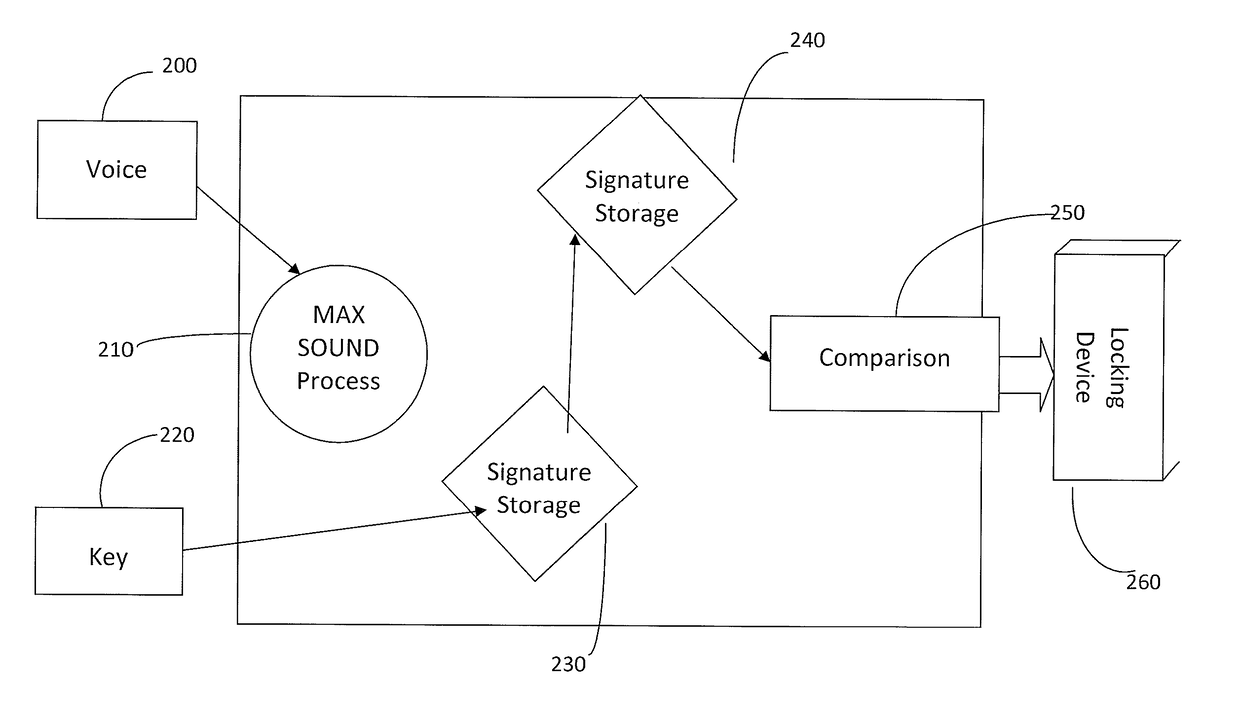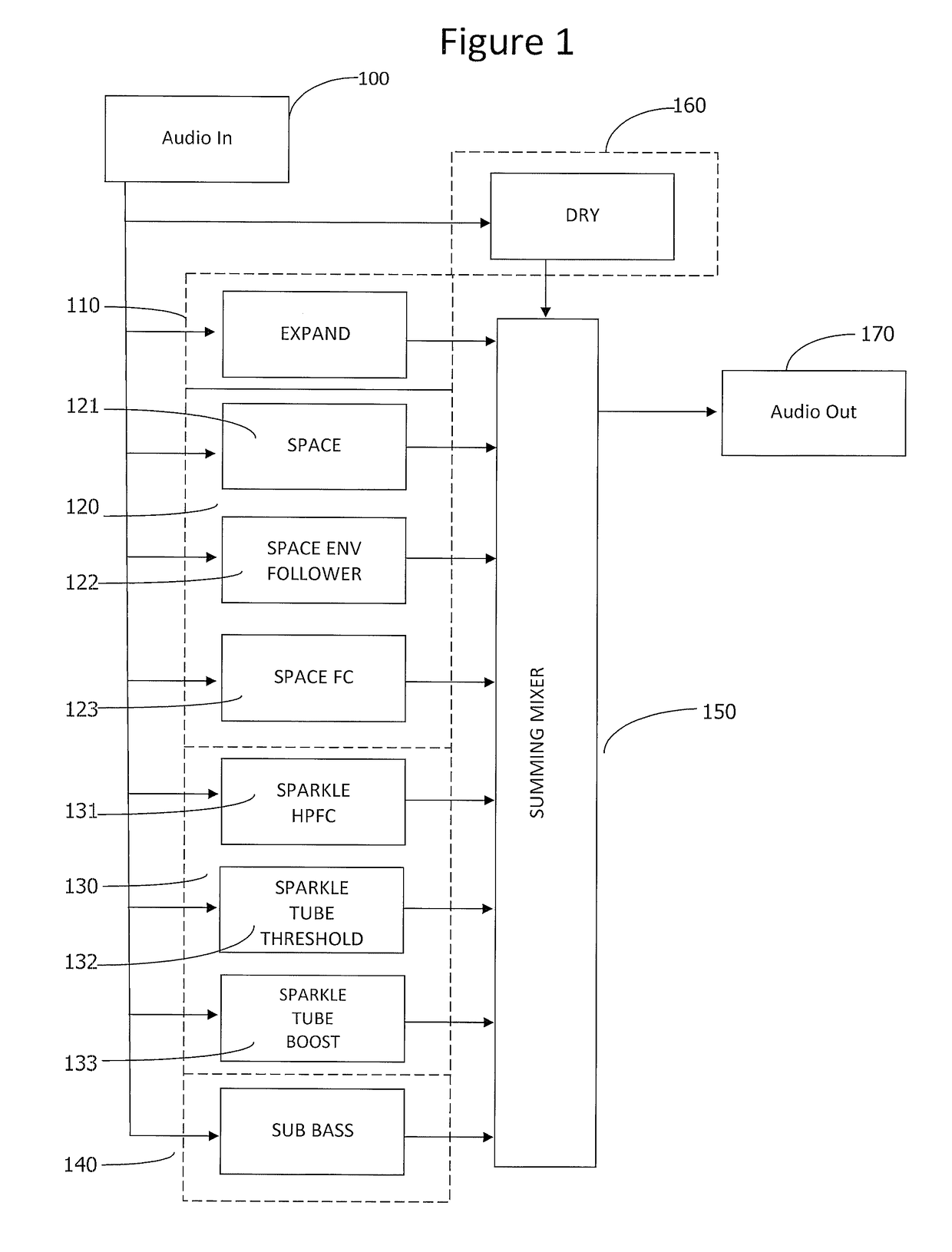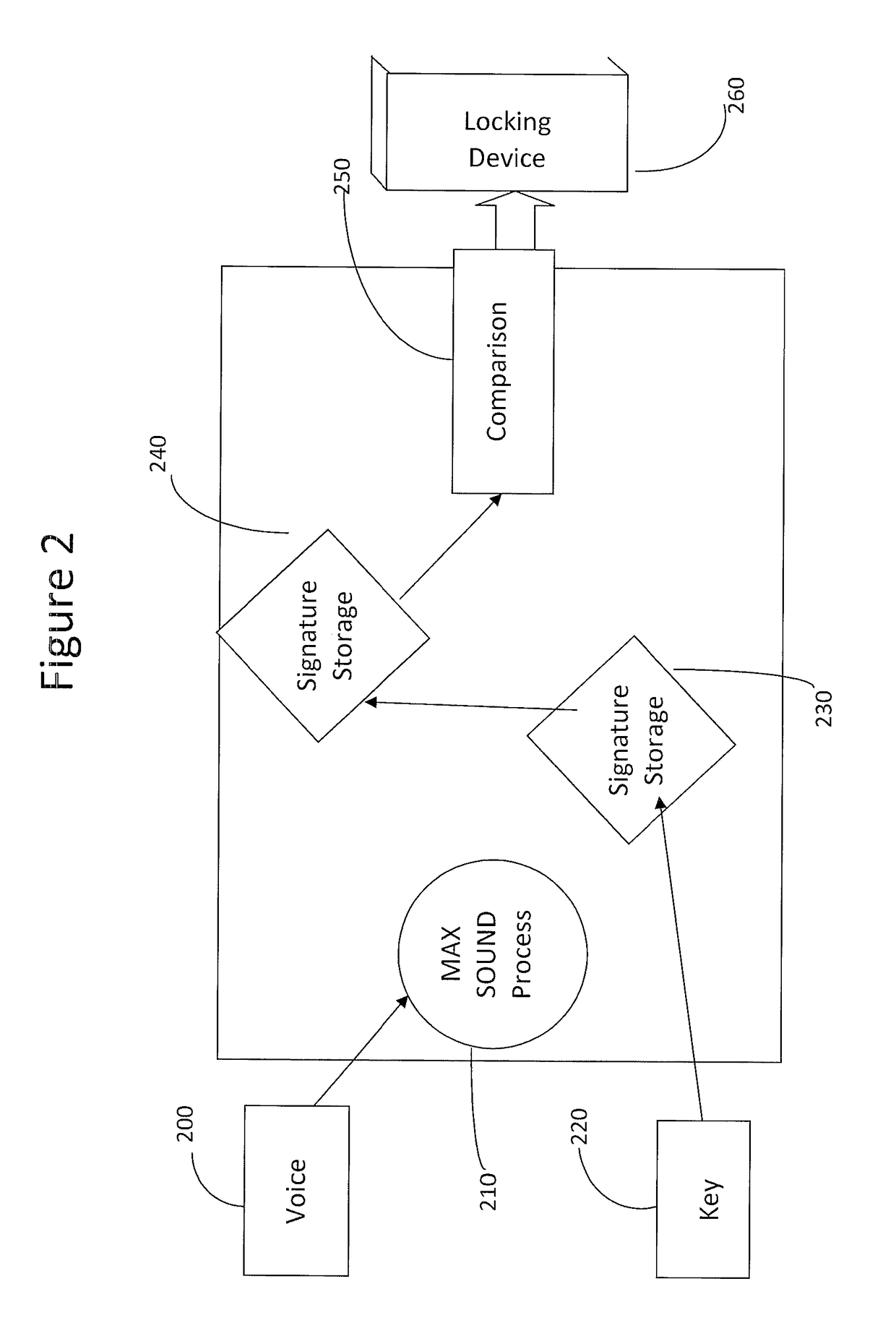Biometric audio security
a biometric and audio technology, applied in the field of biometric audio security, can solve the problems of not being robust, not meeting the needs of many potential voice recognition applications, and being abused to provide illegitimate authentication, and achieve the effect of enhancing the input audio and enhancing the voice audio inpu
- Summary
- Abstract
- Description
- Claims
- Application Information
AI Technical Summary
Problems solved by technology
Method used
Image
Examples
Embodiment Construction
[0016]The inventive BAS system of the present application is not a way of protecting audio. Rather, it is a process of utilizing audio, more specifically, additive synthesis and resynthesis, to produce a unique way of identifying a single source or subject. The BAS system consists of a programmable hardware device (Key), the Signature Storage device which holds the information and processing needed for comparison and the final locking (security) device which can be any type available. This entire process is a DSP software based solution that requires DSP processing capability in the host.
[0017]The BAS increases the integrity of audio used for biometric identification. The following is a description an exemplary embodiment of the inventive BAS explained by reference to FIG. 2. Voice 200 represents the intended voice that will be examined for identification. Voice is processed with the Max Sound process 210 (further described below) for enhancement. The MAX SOUND process (MS) 210 will...
PUM
 Login to View More
Login to View More Abstract
Description
Claims
Application Information
 Login to View More
Login to View More - R&D
- Intellectual Property
- Life Sciences
- Materials
- Tech Scout
- Unparalleled Data Quality
- Higher Quality Content
- 60% Fewer Hallucinations
Browse by: Latest US Patents, China's latest patents, Technical Efficacy Thesaurus, Application Domain, Technology Topic, Popular Technical Reports.
© 2025 PatSnap. All rights reserved.Legal|Privacy policy|Modern Slavery Act Transparency Statement|Sitemap|About US| Contact US: help@patsnap.com



